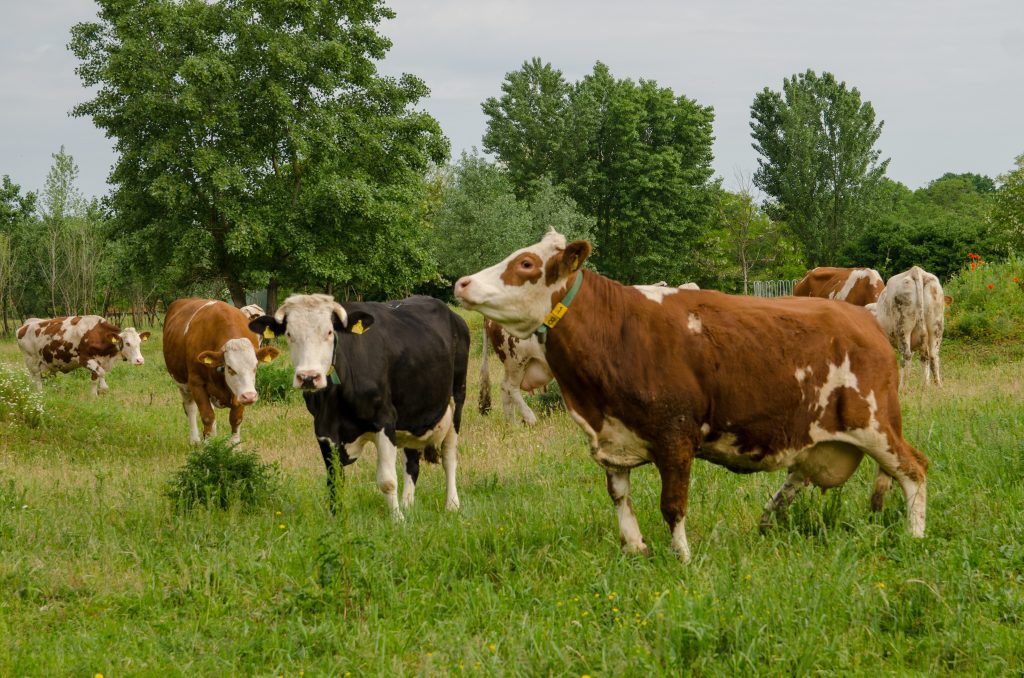No one who can walk and chew gum at the same time would deny that we are facing a climate emergency – and more worrying still, the prospect of irreversible loss of biodiversity at a global scale.
There’s no doubt that co-ordinated actions by governments, businesses and citizens are needed to stop and reverse global heating. We have the technology to do this, but not yet the political will.
There’s no doubt too that the options space for climate solutions gets a good deal larger if we collectively reduce consumption of livestock products. Many of these – from farmed salmon to chicken and industrial pork – are a miserable way of wasting food. They put in a large amount of human edible protein and produce a much smaller amount at the other end, while polluting the environment and mistreating smart sentient animals.

Halving meat consumption in the EU, for example, would not just cut agricultural emissions by a similar amount. It would also free up huge amounts of land, and allow a full transition to agroecology, with much better animal welfare for a smaller number of animals.
This is of course simple but not easy. In the UK, consumption of beef and lamb is in long-term decline, and pork consumption has been broadly flat. But chicken consumption – which now accounts for more than half of our meat intake – has risen by 20% this century.
Reversing this trend will take more than a vegan option at Greggs or KFC. It will take a major redefinition of normal. There is still resistance from most national governments (including ours) to setting out a policy on meat reduction, but cities can be bolder sooner. Some of the major catering companies are also starting to shift towards plant-based diets: but even ambitious campaigns like Eating better and 50by40 see this as a generational change over the next 20 years.
George Monbiot and the recent RethinkX food and agriculture report predict much quicker change. In this scenario, the new meatless meat from the lab and plantless food from the vat will make traditional farming redundant in a decade or so. These new products will be so tasty and cheap they will outcompete what we fondly now call the real thing.
This picture of the future (as well as being a sales prospectus for investors looking for the next big thing) rests on two premises. First, it’s the inevitable logic of the market; cheaper substitutes will win. Maybe: but Quorn has been around for 35 years, and textured vegetable protein (TVP) for 60. Both had major company backing, and neither have done much to displace livestock farming.
The new lab meat is at least tastier by all accounts than TVP; and some people who don’t like the way sausages are made will like the way lab meat is made. But I’m not selling my cows just yet.
The other premise is more dangerous. It’s that the current food system is on the brink of collapse. It’s not.
Of course, it does face huge challenges. We need to look after our soil much better, and put back in the gigatonnes of soil which we have taken out over the last century. We need to be much smarter with nitrogen, trees and water; improve animal health and welfare, get off the pesticides and antibiotics and cut food waste right along the supply chain. We need much more diversity in the field, on the plate and in between.
But it doesn’t help to talk of imminent collapse, The global food system is under pressure, but it is not falling apart. In 2018 when Europe and the UK sweltered in the drought ,crop yields dropped by 20m tons – around 7% overall. Nobody noticed when they went shopping. Nobody went hungry because of the harvest, though plenty of people in the UK went hungry because of austerity.
The food price index of the Food and Agriculture Organisation is at a five year high. The price drivers include the demand for ethanol diverting sugar from feeding humans to fuelling cars, and the demand for biodiesel putting up the price of palm oil. (Easy to see why some sectors are so keen on advocating biofuels to tackle climate change) Pork prices went up after millions of pigs had to be killed in the African swine fever outbreak. But the index is still 25% below its peak in 2011.
Climate change poses a threat to future food production, and food production is driving climate change and the thinning of nature. The world needs co-ordinated global action on food and farming, underpinned by stronger global governance. New technologies like insect farms, weeding robots, virtual fencing, vertical farming and even smarter vats will all be a part of the future – though better use of the technologies we’ve had for years will get us further faster. And we absolutely need to eat less and better meat. But talking of the apocalypse is a distraction from getting on the same page and getting on with the work.